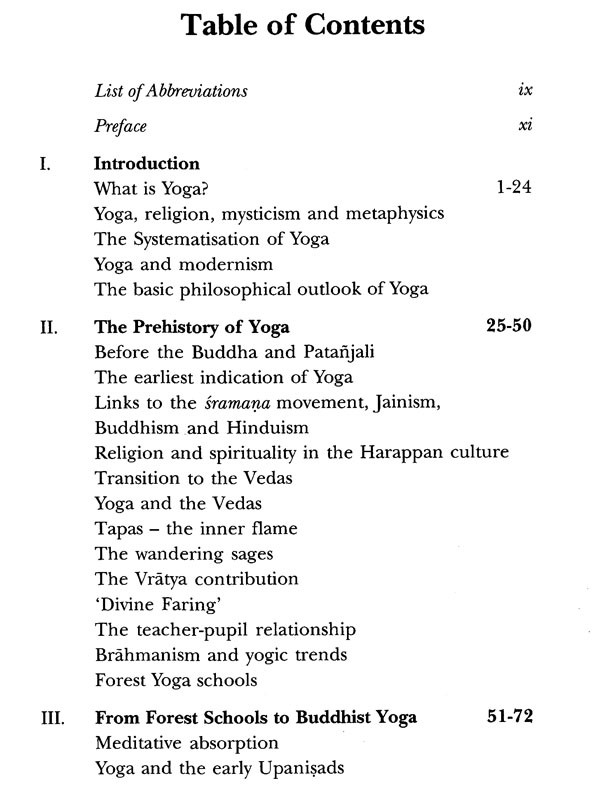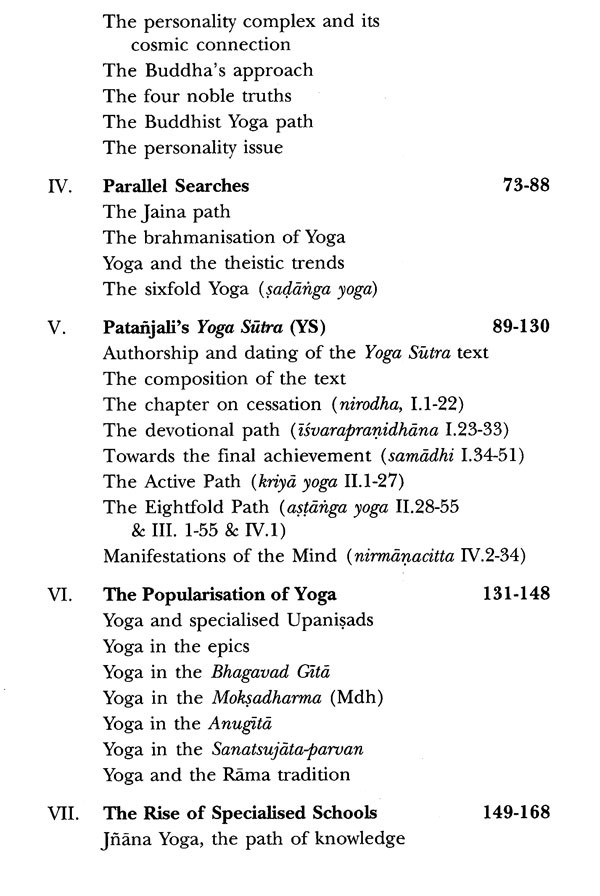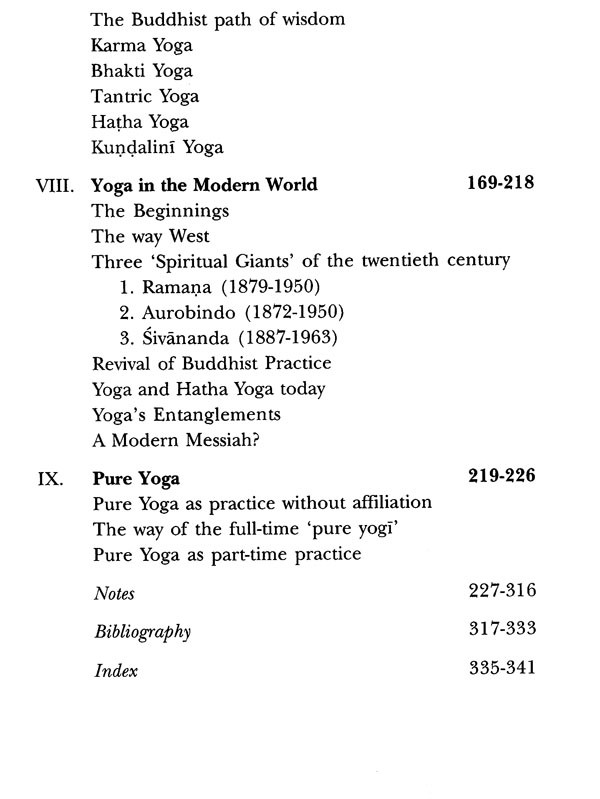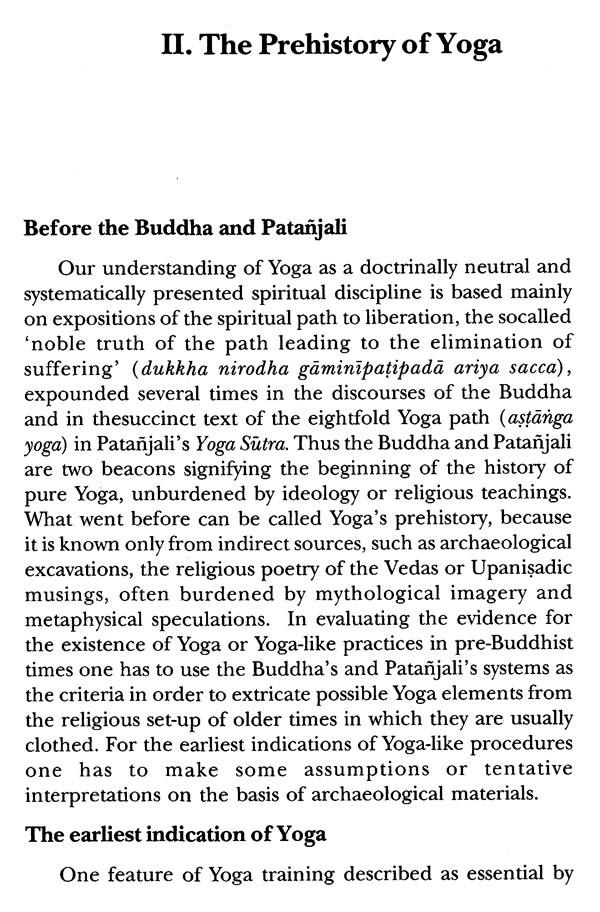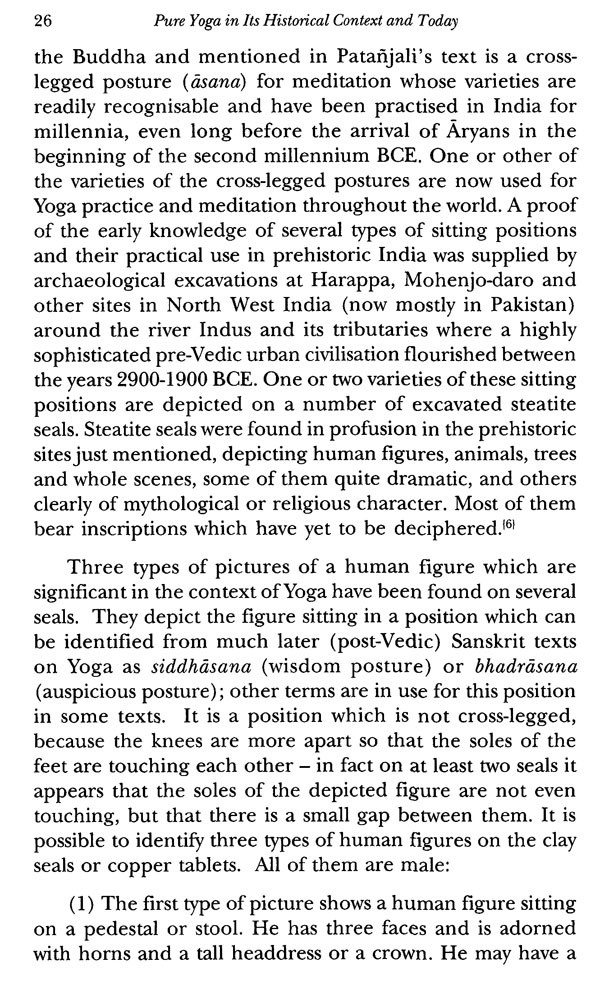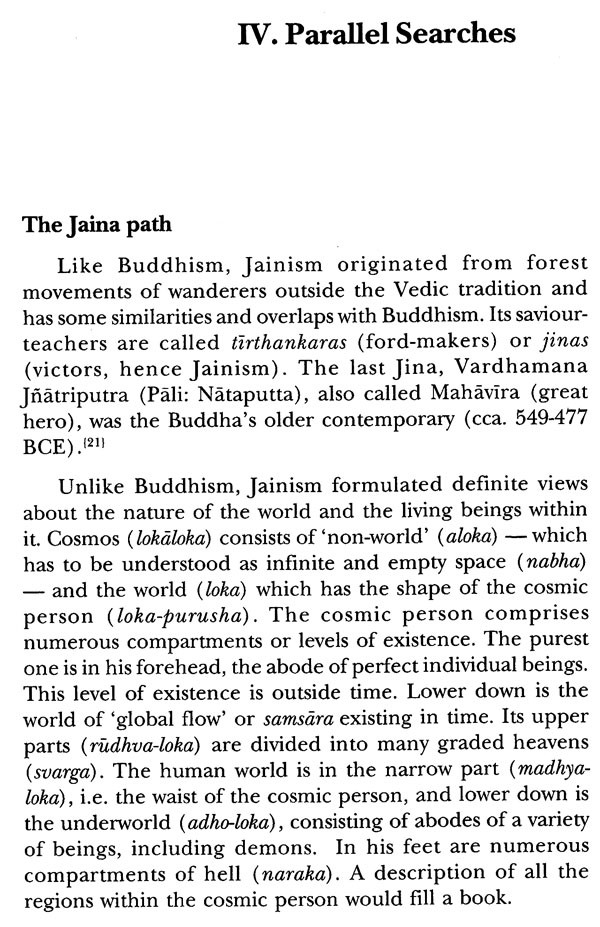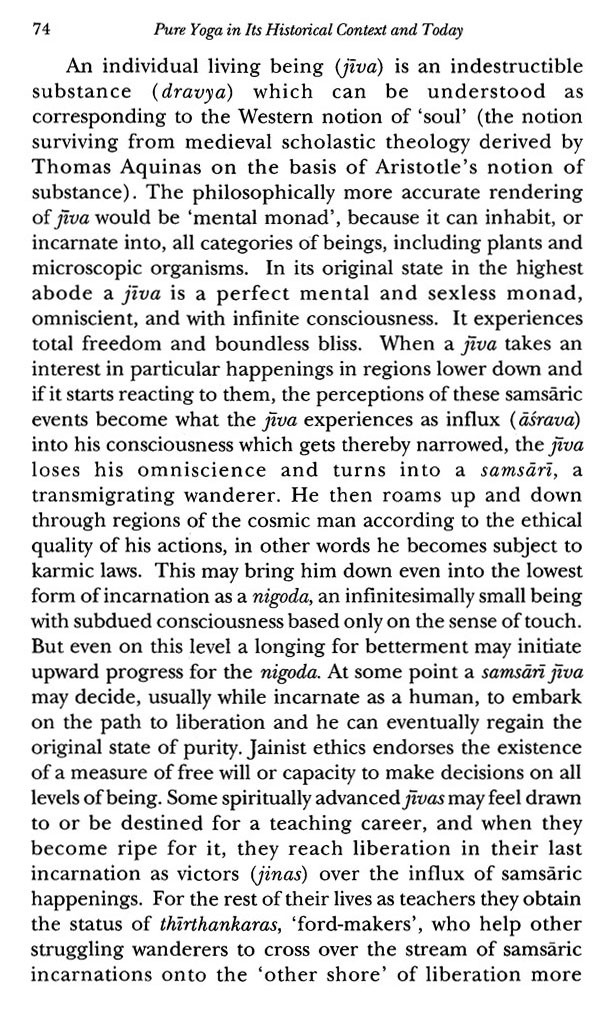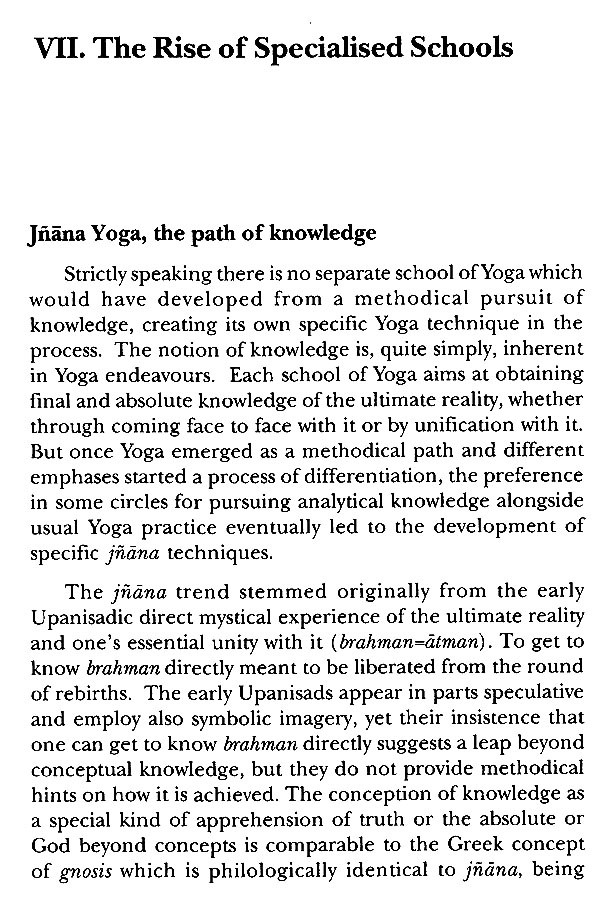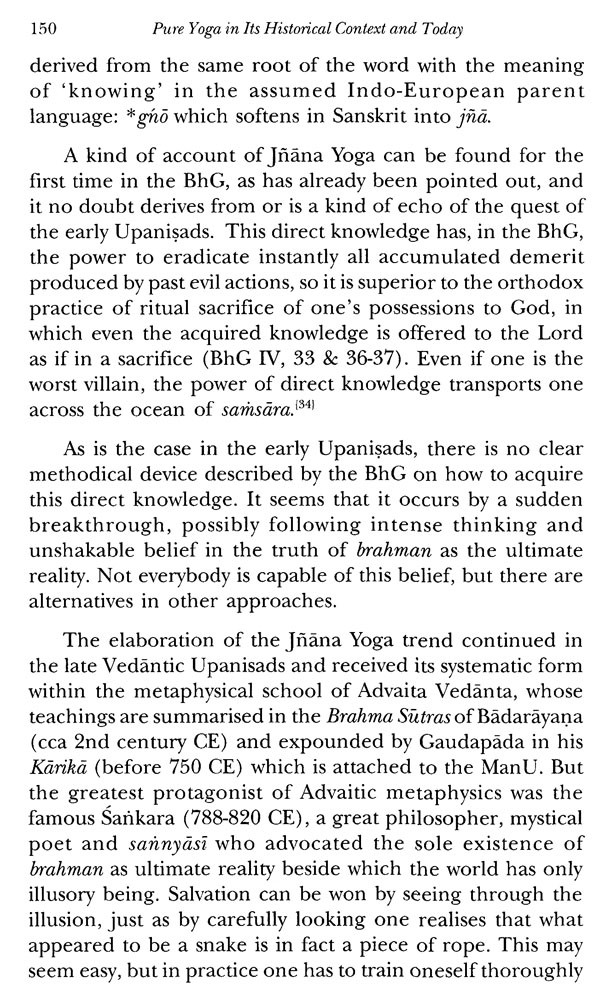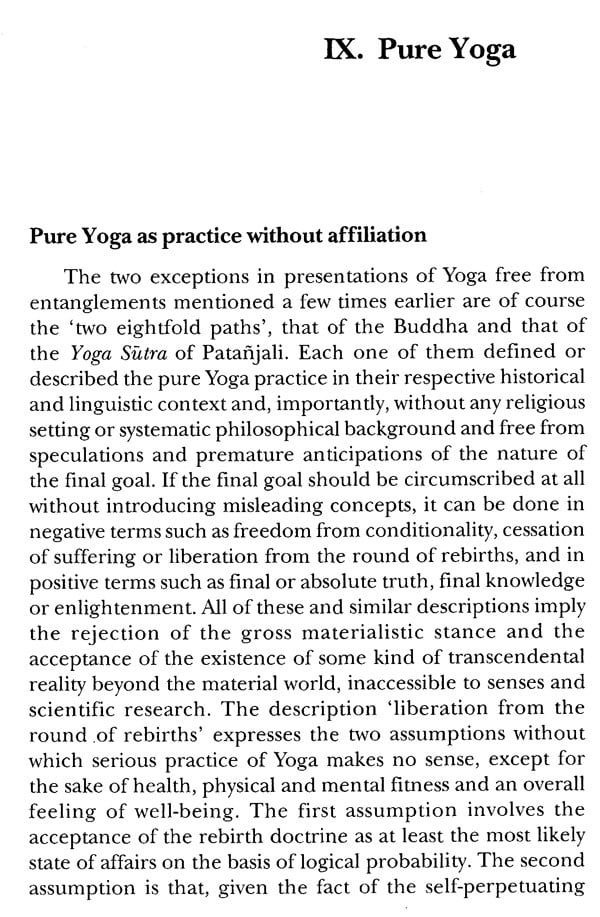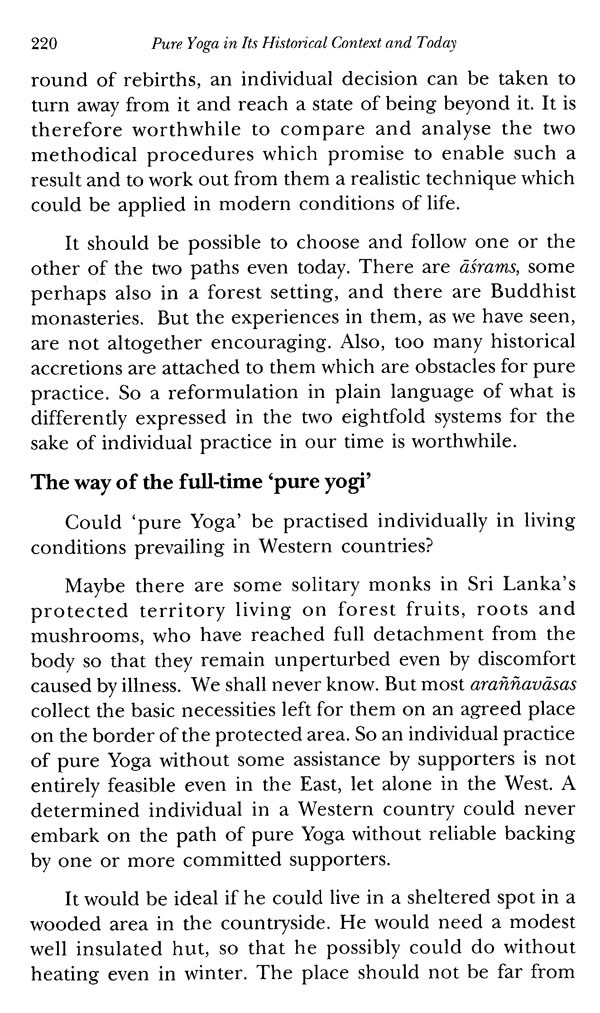
Pure Yoga- In Its Historical Context and Today
Book Specification
| Item Code: | NBZ949 |
| Author: | Karel Werner |
| Publisher: | Motilal Banarsidass Publications, Delhi |
| Language: | English |
| Edition: | 2021 |
| ISBN: | 9788195055371 |
| Pages: | 336 |
| Cover: | HARDCOVER |
| Other Details | 9.00 X 6.00 inches |
| Weight | 440 gm |
Book Description
Yoga has a long history, from early indications in the Harappan civilisation (2900-1900 BCE) among wandering ascetics and forest hermits and echoes in the early Upanisads (600-400 BCE). The first instructions for practice were formulated by the Buddha (563-483 BCE) as the eightfold path to liberation. A remarkably systematic instruction appeared in a short passage within a composite text known as Patanjali’s Yoga Sutra (cca 300-400CE) consisting of an eightfold path (astanga yoga). Various other yoga paths were elaborated in later Upanisads, the Bhagavad Gita and the Puranas. The present series is intended to publish research works of high academic standard, which could serve as reliable guides for evaluating books on yoga appearing in the market.
Professor Karel Werner,
born in 1925 in Czechoslovakia, studied Philosophy, History, Indology and Sinology in Universities of Brno and Olomouc (PhD in 1949).He became lecture in Sanskrit and Indian Civilisation in Olomouc (1947). After the Soviet invasion of Czechoslo-vakia (August 1968), he emigrated to England, where he was appointed Spalding Lecture in Indian Philosophy and Religion in the University of Durham (1969-90). He is now an Honorary Professional Research Associate in the Department of the Study of Religions in SOAS, University of London and a Fellow of the Royal Asiatic Society. He published articles and books on Vedism, Yoga, Buddhism and History of Religions in English, German and Czech. He is currently preparing a new book on Pure Yoga in Historical Context and Today.
Why another book on Yoga? The simple answer is that nobody has so far written a book on pure Yoga. By pure Yoga I mean Yoga as a spiritual practice which is not a part of some definite philosophical system and is not affiliated to a religious doctrine which has to be accepted on faith. The only assumption to be made about pure Yoga as a practical discipline is its preliminary implications and its goal. Its goal is individual liberation from the necessity of being born into a changing world in which one cannot achieve lasting fulfilment of one's aspirations before one passes from it. The preliminary implications are that an individual's life continues beyond the death of the body and that the individual is reborn in this world or in some other dimension of existence and continues to be reborn in an endless sequence of deaths and births in which one seeks but never finds fulfilment, until one makes a firm decision to aim for liberation and eventually achieves it.
This is the basic philosophical outlook of Yoga. It cannot be verified by everyday human experience, but it has a high degree of probability in comparison with all other possible views which are often held firmly, even though they cannot be proved, being mostly based on inherited or adopted religious faith. Similarly, the tenets of so-called scientific materialism cannot be proved, yet are usually held by scientists with full conviction. Thus some astrophysicists believe that sentient life 'emerged' at some point during the formation of galactic systems in the evolving universe when it produced sun-like stars with orbiting planets. Some biologists maintain, without being able to prove it, that individual life depends entirely on the nervous system and the brain and does not continue beyond the death of the body. I regard such firm convictions of scientists as the equivalent of religious faith. Those pitfalls are avoided by some scientists who are agnostics, but their stance that we can never know the answers to questions about the ultimate nature of existence is too farfetched. Yoga promises to provide answers in the form of personal experience and although someone who has found the final answer may not be able to provide proof of it in the way required by science, the possibility that one day proofs may be available should not be ruled out.
The problem is that throughout the history of Yoga its answers have frequently been prematurely anticipated by philosophical speculations and elaborate religious teachings, not to mention fraudulent claims by unscrupulous self-designated yogis to know the truth and promise to pass it to others in exchange for payment. The aim of this work is to trace the origin and history of Yoga as a spiritual practice, point out at each stage of its development the way in which its aim was obscured rather than illuminated by these entanglements, and to try to assess whether in different times there were genuine yogis.
In the oldest period of Indian prehistory we are limited to archaeological discoveries, yet the occurrence of pictorial finds, of a few statues and of some telling ruins makes it possible to adumbrate a plausible picture of the religious situation of the time and of yogic elements within or alongside it. Subsequent periods produced writings which are, however, mostly of a religious nature, with some early philosophical attempts. But even so, from these sources, mainly the Vedas and the Upanisads, we learn that unaffiliated yogic trends existed and were developing not within but alongside or completely outside the religious establishment which, however, eventually started appropriating them for its own purpose. Philosophical speculation joined the trend and Yoga has never become fully dissociated from these accretions.
Yet indirect evidence makes it clear that something approaching pure Yoga was already being practised among homeless wanderers in the times of the Vedas and it can even be surmised that there was a link to the prehistoric period. In the time of the early Upanisads there is also evidence of Yoga practice in settled communities of disciples assembled around teachers in forest asrams. From them emerged eventually a comprehensive text dealing with several methods of Yoga practice which is known as Patanjali's Yoga Sutra (YS). Each one of these methods probably originated in a different asram, but the assembled text is the work of a single compiler. The great merit of the Yoga Sutra is the fact that it is basically unaffiliated to any particular religion or philosophical system and that there are in it only minor religious and philosophical elements. The most important part of the Yoga Sutra is its fifth chapter dealing with 'eightfold Yoga', succinctly defined in one single stanza (11.29) and elaborated in the rest of the chapter.
At the same time as various teachers in the forest asrams were instructing their disciples in their particular methods of Yoga, but some two hundred years before the finalisation of the Yoga Sutra by a compiler into the textbook-style collection known today, the Buddha formulated his 'noble eightfold path' as a way to liberation. It is a Yoga path in all but name and it undoubtedly influenced the formulation of the eightfold Yoga in Patanjali's Yoga Sutra. The notion of ‘pure Yoga' as understood in this book is derived from these two eightfold paths and elucidations in their respective sources. This notion is used as a yardstick or criterion when describing and evaluating the historical developments of Yoga throughout the centuries and in different contexts. In the last two chapters of the book an attempt is made to outline the way in which pure Yoga could be practised in the conditions of modern life.
The book has been written on the basis of original research in sources and of research results of experts but with the intention of making it readable for members of the general public interested in the theory and practice of Yoga. Quotations of original Sanskrit texts with translations and references to other works relevant for discussed topics as well as some personal explanations and the author's assessments and opinions have been put into endnotes. It is advisable to ignore them during the first reading of the book in order to obtain an overall picture of the subject of Yoga in the author's understanding. On the second reading the notes should be read in the appropriate order as their numbers occur in the text.
Readers of this book would greatly benefit from knowledge of the author's earlier book Yoga and Indian Philosophy which deals with Yoga in a wider conceptual context. Its fourth reprint has already been published and is available on the market.
What is Yoga?
In popular parlance Yoga is often understood as referring to the practice of 'postural Yoga', usually described as beneficial for physical health and fitness. To use the word that way is strictly speaking misleading, the correct term for it is Hatha Yoga which will be dealt with in Chapter VII, on `The Rise of Specialised Schools'. Nevertheless, many people are aware, even if they are not themselves practitioners, that Yoga is a spiritual and ascetic discipline geared to discovering the meaning and goal of life and, in the last instance, to realising that goal by personal experience.
To some degree that understanding penetrated into the widely respected publication, The Concise Oxford Dictionary, although its definitions of Yoga have to be regarded with some caution. A rather imprecise definition of Yoga appears in its 11th edition in electronic form (OUP 2006) as "a Hindu spiritual and ascetic discipline, a part of which, including breath control, simple meditation, and the adoption of specific bodily postures, is widely practised in the West for health and relaxation". It is not correct to refer to Yoga as a `Hindu' discipline, since it considerably predates the formation of the complicated religious system known as Hinduism. Yoga started acquiring its systematic form under this term cca 400 BCE in the time of the Upanisads when the then current religious system was dominated by Brahmanic ritualism and is therefore referred to as Brahmanism. But Yoga as a discipline was not its product.
The sources of Yoga are composed mainly in Sanskrit, an ancient member of the extensive Indo-European family of languages which share many verbal similarities, some of which are recognisable even in the modern forms of Indo-European languages (Werner 1987). Thus the term Yoga is akin to the English word 'yoke' and Latin iugum. It is derived from the Sanskrit verbal root yuj (present tense yunakti) which corresponds to two English verbs: 'to join' and 'to unite'. The meanings of all the three expressions (`yoke', 'join' and `unite') reverberate in the term Yoga. It designates a discipline which `yokes' the mind or the whole personality of the practitioner to a precise procedure whose final aim is to join or be united with the ultimate reality or the final truth. So a brief definition of Yoga can be tentatively formulated as follows:
Yoga is a system of training the mind and the whole personality, by way of specialised techniques, with the aim of eventually achieving a direct encounter with, or knowledge of, the ultimate reality or truth.
It is unnecessary to consider or even mention the multifarious uses of the term in different contexts in India over the centuries (as does White 2012, 2-4) in a publication such as this whose purpose is, in the final instance, to penetrate to the essence of Yoga and to unwrap or extract from the historical sources a pure form of its practice, the aim of which is the practitioner's personal salvation.
Yoga, religion, mysticism and metaphysics
The above brief definition suggests that Yoga is a spiritual discipline in its own right and is independent of particular religious beliefs and philosophical assumptions. When it is thus understood, it contrasts with spiritual practices of a higher order in different religious and spiritual traditions, often referred to as mysticism. This was not always clearly understood. Thus the 5th edition of the Concise Oxford Dictionary in hardback (OUP 1964) still regards Yoga as a "Hindu system of philosophic meditation & asceticism designed to effect the reunion of the devotee's soul with the universal spirit". This description has obvious religious and philosophical connotations. It presupposes the existence of individual souls and of a spiritual source from which at some point these souls emerged or by which they were created and to which they aim to return. To be united or reunited with the universal spirit or ultimate reality (variously defined) is the goal of practically all religions based on belief in the existence of a God Creator. It is also the goal of deeper trends in some philosophical schools of thought with strong metaphysical leanings towards monism, such as Greek neoplatonism or Indian Vedantism. It may even apply to some spiritual traditions which do not quite fit the label of religion or philosophy, for example Chinese Daoism. It could further apply to modern varieties of spiritual teachings such as Theosophy and various 'New Age' trends on the one hand and the still strong contemporary theistic religions (Judaism, Christianity and Islam) on the other. Each of these systems has specific ideas about the nature of the final goal or salvation and about the spiritual practice through which it is to be achieved.
**Contents and Sample Pages**
